Heath Hicks - Catch More Profits with The Catch-All - PODCAST TRANSCRIPTION
June 20, 2023 at 6:00 p.m.Editor's note: The following is the transcript of a live interview with Heath Hicks from The Catch-All. You can read the interview below or listen to the podcast.
Intro/ Outro: Welcome to Roofing Road Trips with Heidi. Explore the roofing industry through the eyes of a long-term professional within the trade. Listen for insights, interviews, and exciting news in the roofing industry today.
Heidi J. Ellsworth: Hello and welcome to another Roofing Road Trips from Roofers Coffee Shop. My name is Heidi Ellsworth, and I am here today with kind of a legend in the roofing industry at this point. When you think about the Catch-All, everyone's like so cool. And I am here with Heath Hicks, who I have been wanting to meet and spend some time with for a very long time. So Heath, welcome to the show.
Heath Hicks: Ta-da. Here I am.
Heidi J. Ellsworth: Ta-da.
Heath Hicks: Thanks for having me.
Heidi J. Ellsworth: I have to tell you, seriously, such a great product, such great marketing. You guys do such fun stuff. But I've been really excited for this podcast so we can talk about it. So before we get too far into it, before I get too fangirl here, let's have you introduce yourself. And tell us a little bit about your company.
Heath Hicks: Well, I'm Heath Hicks. I am the co-founder and co-inventor and co-owner of the Catch-All. I've been in roofing for about 15 years. I also own Avco Roofing, which is a regional roofing company out here in Texas. We cover Texas, Oklahoma, Louisiana, Arkansas. Parts of all those states. We're good size, and in the process of growing that company. Focusing on the customer experience was one of our early attempts of differentiating ourselves. In that process, we ended up inventing the Catch-All.
Heidi J. Ellsworth: Differentiation is what it's all about, isn't it?
Heath Hicks: Absolutely. Yeah.
Heidi J. Ellsworth: Well, okay, talk to us. I mean, you just said a little bit that, by trying to differentiate your roofing business, you invented or came the idea of the Catch-All. So tell us a little bit of the inspiration to create the Catch-All and the history.
Heath Hicks: Yeah, so in the beginning, I was a salesperson for another company for about seven years before I decided to take the leap and become an owner. And I learned pretty quickly that the mindset in roofing was, "It's a construction site, there's going to be trash and nails. We're going to do our best, but we're not going to get them all. So you're just going to have to give us a pass because we're taking off 7,000 nails today. So there's going to be a few. If I get 6,994 of them up and you find six, don't be too mad at me." That was the mindset in roofing. But I quickly realized that customers don't share that mindset.
Heidi J. Ellsworth: No.
Heath Hicks: They don't want any nails. They don't care how many you take off or how hard it is. They just don't want nails and trash left in their flower beds and in their grass. They don't want paths worn through their awesome grass from all your wheelbarrows and foot traffic. If you did it on a day after it rained and it was muddy and you tracked mud all through the yard, they don't want that. They don't care that it was a construction site. Some of them, of course, will give you a little bit of a break, but they still don't like the experience. Even if they're saying, "Okay, I'll accept it." They still don't like it. And I wanted to get the experience to a place where everyone liked all of it.
Heidi J. Ellsworth: I love it.
Heath Hicks: And so it seems like an impossible goal, but you'll get closer if you try really hard. So we tried really hard to get as close as we could to making the roofing process enjoyable all the way around. And so as a salesperson, I was doing that just to try to get more referrals, and get better reviews from my customers. Trying to figure out how I could mitigate all the pain points.
And so the mindset that, "It's a construction site, it's going to get dirty. We're going to clean it up almost a 100%, you're just going to have to live with it." They didn't buy that. I didn't like the experience I was having with people when I would put on a really great roof, $30,000 roof. You walk outside, and the first thing a customer does is look down into the grass and in their flower beds. And I'm like, "No, no, no. Look up here. This is where all the work is. Look up here." And they're just digging around being grumpy about a bunch of granules on their porch. And in the beginning, I was just flabbergasted. We did such hard work. We did such a great job. But at the end of the day, most customers don't really know what goes into a roof. They don't obviously know whether the shingles are on backwards, upside down.
They don't really know the difference. That's not what they usually gauge everything by. If it leaks, obviously they'll have a big problem with that. If it's really ugly, obviously they have a big problem with that. But in general, their first concern is, "Did you mess up all my stuff?" And I just had to adapt to that because the customer is always right, regardless of whether you think it's a reasonable mindset or not. That if it is consistently their mindset, you have to adjust to it. And so I did. And I started doing everything I could do to mitigate those problems. And when it wasn't my company, I could only do so much, but I did the best I could. And then once I became an owner, I just decided in my heart of hearts, I was going to solve the problem completely.
And so we went to great lengths to solve the problem of trash and nails, millions of tarps. I mean, I had an entire trailer just full of as many tarps as you could fit in there. And I'd put them everywhere. It would take me an hour, hour and a half to tarp everything. And I would do it like...
Heidi J. Ellsworth: Geez,
Heath Hicks: The early morning before the crew started, because you couldn't do it the day before because it would burn the grass. And so you would have to do it the morning of, and you're there before the crew. If you can pry your eyes open that early, to get there before them. Try to put as many tarps as you can. And that only got me so far. And so then I started buying the most powerful magnets you could find on the planet. They were like 900 bucks a piece of rolling magnet, just to try to get all the nails out of the grass afterwards.
And it did better than the ones you buy at the roofing supply store, but it didn't solve the problem. So then I heard about a guy who bought metal detectors. I'm like, "Oh my God, this guy's a genius." Minus the fact you have to spend two hours, beep, beep, beep, beep, beep, beep in somebody's yard to try to find them all. You still don't get them all right.
Heidi J. Ellsworth: Right. No.
Heath Hicks: And so I just realized the only way I'm ever going to solve this problem is just, I can't let any nails hit the ground. Because when they hit the ground, you cannot get them all back. Because people step on them, and they get smashed in, they get caught up in the grass, you roll your magnet over there 9 million times. And the nail's just under some blades of grass and it just doesn't come out.
And then down in the flower beds and the mulch and stuff, you can't get your magnet in all those places. But grandma's definitely going to be digging around in there in the spring, pulling her bulbs out. And she's totally going to find those nails, and a certain percentage of them will 100% leave you a bad review without even calling you. Could be six months they were happy, and she finds two nails in her garden and you got a bad review. So I just realized the only way to solve the problem was to prohibit it, just to stop those things from ever landing on the ground. And that was the first real mindset change to, "Oh, there could be a solution. I don't know what it is, but I know that with unlimited resources and unfettered creativity, I could find a way to do a roof with not getting anything on the ground."
It might be really hard, it might be really expensive, but I'm going to find the solution first and then figure out whether it's expensive or unreasonable. So I just started using a lot more material. And one day I was out on a job site and I ran out of tarps. It was a really big house, and I started on the back and got to the front, the most important part at the front door, all these gorgeous bushes and flowers. And I had no tarps left. And I was like, "Man, what do I do?" So I asked the crew if they had any tarps. He found one or two tarps, and then realized there was just this one patch. And the crew leader went and grabbed the debris cover off of the trailer, the one they roll over the debris so it doesn't [inaudible 00:07:10] that netting. And he pulled that off, and I was like, "Oh my God."
Once I sat there, I was like, this is exactly what I've been looking for, because it won't burn the grass. It doesn't look as ugly as a big pile of blue tarps. It just looks like a pile of trash on someone's house. I didn't think they were going to be as durable as they are, but I just realized this is the solution, because I can put these everywhere. They're more expensive than tarps. But I just went and bought a bunch of those and started putting them everywhere. And then I started trying to figure out, "Okay, how do I really catch all of this debris without smashing everything underneath it?" So then I started trying to hang it off the house, which you'll see in Facebook posts, especially up in the northeast, they do that a lot. Where they nail a tarp into the edge of the roof on surface itself, right above the gutter or something, and they nail it in there. And then they stretch it and they kind of tack it into the ground or stick it into the ground so that the debris slides away from the house.
And so I saw that and I started trying to emulate that. And then we're a busy company, so we were doing lots and lots of roofs. So I had to figure out a way that I could use it on every house. But hanging it from the gutters? Not every house has gutters. And I started trying to hang it from the fascia so I didn't have to nail it into the decking. Because then you have to take it off when you're doing your last shingles and just trying to figure out how can I make a system I can use on every house no matter what. And by that time, we were in research and development. And my partner Eric was like, "Why don't we just use poles or something? Why don't we put some poles and hold the net up ourselves instead of trying to attach it to the house?"
And it was a genius moment. That's when we really unlocked our ability to be able to use the system on any house, anywhere, regardless of what the service of the wall was, or what the fascia was. Or whether it had this, or didn't have that. We made a modular system that would work everywhere. And so that's when momentum really took off, and we started being able to prototype the systems at our jobs. So we created five systems in the beginning and used them for months and months and just watched the crew use them, interview the crew about them, ask the customers about them. And we realized we had a winning product when the first crews that didn't want to use the system at all, we were even paying them because it was research for us. We're paying them to step up and take it down.
They were like, "No, we're not going to do it." So then we had to offer them money. And they're like, "Okay, we'll do it for you basically as a favor to you." Because these are crews I've known for a long time. And they're like, "Okay, fine. We'll do it." Give them a hundred bucks a job or something. I don't know. We realized we had a winning product when at the end of that two weeks we went to take the kits and give them to other crews. And the crews were like, "Oh, it's okay. We'll keep them now. We'll use them and we'll keep giving you the information. It's okay." And we're like, "No, we need to take them." And they're like, "No, it's good. We'll keep it. We like it." And then I was like, "Okay, sweet. It's going to work."
Heidi J. Ellsworth: Well, and to have the actual crews testing it out for you and how much time you went into testing. I mean, that's the key. And knowing what you're doing. How often do we have products come into roofing that they have no roofing experience, right?
Heath Hicks: Yeah. Yeah. It's some guy who has a great idea while he's watching roofers on his house, and doesn't understand the practical implications of what they're dreaming about. Yeah.
Heidi J. Ellsworth: You have a 2.0 version that has just come out. And maybe just talk about the progression of the Catch-All and the improvements that you've been making.
Heath Hicks: Yeah. So the differences in the system now versus our original ones, the netting itself. So if you don't know, you could look it up. But Catch-All is essentially a system of nets that wrap around the house and protect the house from falling debris. And in the beginning we were buying other people's nets, and kind of slapping it together and making it the way we wanted it. Then we started manufacturing nets. Then we started testing the nets that we were getting. And there's a video out there called the torture test that you can see, its sort of like a 30-minute video where we just try to figure out how to make them fail. It's pretty funny. We realized that there were certain orientations that worked better of the material. And so we flew to China, we sat with the manufacturers for a week, testing the product.
They would make it one, we'd go and test it. They would make it again, then we'd go and test it. And so we figured out kind of an ideal way to manufacture the net to make it stronger, make it last longer, make it more shock absorbent, and then make it a small enough screen where granules don't even fall through. So once that stuff starts falling off the roof during tear off, it'll catch that and keep it from landing in the gardens, flower beds and stuff like that. So the nets that are in the system now are much better than the original nets. The poles are better, the toppers are better. One of the biggest improvements is, initially the logo banners that we put on there were sewn onto that netting. And they were fixed in place. In 2.0 we put Velcro strips installed into the netting all the way up and down the netting. So you can move your banner wherever you want it to be.
Heidi J. Ellsworth: Love it.
Heath Hicks: You can even take it off when you're storing it or moving it so the banner doesn't get as crumpled and stuff. You can take it off and roll it up, put in to the next one. So it just stays nice and fresh. But the ability to be able to move it to right where you want it on the house, to get your best impact in the street is notable. Plus you can add messaging to it all the time. People will call us and they get a custom banner printed for the spring, or storm season, or winterized roof, or Hello Twin Oaks. We're the best roofers in town. Locals love us and we're number one. Or whatever it is. They'll put that on their banners, and they can kind of customize the messaging they're putting into certain areas, or cities or seasonal. I get people that advertise their financing on there, whatever it is. So that really was a big improvement because you could kind of make it a billboard that you could re-message all the time.
Heidi J. Ellsworth: Yeah. I think it's brilliant marketing. And even think about it, if you're going into a neighborhood and you customize it to that neighborhood. How cool is that for the neighbors looking at it and saying, "Hey, they care. They know where they're at. They know what they're doing." You said earlier too, as the homeowners are looking on their porches and they're seeing granules, this captures everything, right?
Heath Hicks: Yeah. Yeah. It does. Gets all the trash, all the little felt pieces that blow off. All the little bits of plastic from the old shingles that kind of blowing around everywhere. It gathers all of that stuff so that at cleanup time, if you set it up correctly, you literally just wrap up all the nets at the bottom. Go dump them in the trailer and you're done.
Heidi J. Ellsworth: Yeah. That's so cool because I've seen it before. And I mean, I've talked about it for years and years and years. Grandma's rose bush is the most important thing in that yard, and they don't want granules around it. Or nails. Or it smashed.
Heath Hicks: No.
Heidi J. Ellsworth: And so this is brilliant.
Heath Hicks: Yeah, because her great-grandmother brought that across...
Heidi J. Ellsworth: From Ireland
Heath Hicks: Yeah. Across the Atlantic or something. It was a clipping from Italy or somewhere and 14 generations old. So don't mess with that.
Heidi J. Ellsworth: Yeah. I have one of those. So I can relate to this. So I love the marketing part of it, and I love the fact that the Velcro, what you're doing. I mean, that is so key to so many contractors. And again, what are you hearing from the contractors as they're talking about giving you feedback now on version 2.0 and all these changes? And just what it's done for their business?
Heath Hicks: So the thing that we hear oftentimes is how much traffic it generates for them at the job site. People will continually just walk up to the job site to figure out what the system is, who the roofer is. "Can my roofer get one of these? How do I get my house to be protected like this?" We hear that often. Generates a lot of call-in leads as well. Now we have QR codes. That's our newest kind of development. It's been out for a few months where we'll print you a really large sized code that you can put on there that the grandma across the street that doesn't want to get out and talk to anybody can just scan it from the window inside. She didn't have to open the door. Just stand there and call your office or make an appointment or whatever it is. Whatever your lead flow is, but they can interact with your funnel in a very low pressure way, any time of day across the street.
Don't even have to come outside. They can figure out how to get in contact with you. And so that generates hundreds of leads a month. We see them as they come through our... We don't see the leads, but we see every time someone uses one of the QR codes. And hundreds and hundreds per month, and that banner costs, I think it costs 149 or something like that. 149 bucks. And we got people that are getting 30, 40 leads a month off their QR codes. So, it's most bang for your buck. Definitely.
Heidi J. Ellsworth: Right. That's great.
Heath Hicks: I've been talking a lot lately, giving this talk at the different conferences about how to generate the highest quality, lowest cost leads in your market with a big wide approach, not just about the Catch-All. But how to be effective at hyper-local marketing and really waking up a whole neighborhood to your company at a time. And the Catch-All obviously is an effective part of that.
Heidi J. Ellsworth: Well, and I think I see the exact same thing is that buying habits are changing, right? People want to, first of all, they want to maybe do it more online. They just want to call. They want to do some research ahead of time, and you're giving them such a perfect opportunity for that non-pressure, sell. That they're like, "Hey, look. That house, it looks great. The yard was taken care of. It's all good. I'm going to call them." So okay, you just had a new product come out. And it seemed like there was possibly some things that were maybe escaping through the gutters. So, what'd you do?
Heath Hicks: Yes. So once we got enough Catch-All's that all of our crews had them at my roofing company, our calls went down drastically as far as people being unhappy with that part of the experience. But we were still getting some, and we really couldn't figure out how. We're like, "Oh, maybe the crew's just not really using it. Maybe there's some jobs that they don't set it up if the supervisors doesn't get there in time. Or what's the deal?" And it took us a little while to realize that it was actually nails and granules washing out of the downspouts after the first hard rain. In our marketing for this, we've explained that nails and stuff wash out. And a bunch of people go, "Oh no, whatever roofing crew leaves nails on the roof, they're a terrible roofing crew. And we blow out the gutters."
But what people don't realize is that I inspect roofs. I've inspected roofs for 10, 15 years of my life, and I find nails on roofs that are 20 years old, all day long. Old rusted nail from 20 years ago is still sitting up there, right?
Heidi J. Ellsworth: Holy cow. Yeah.
Heath Hicks: There are nails on the roof when you're done, whether you like it or not. Or you believe me or don't, there are. Because a lot of times the last nail in the coil nail will fly out of the gun and it's off on the roof. And they don't get them all because they don't roll off real easy, especially if they've got part of the coil supply part still on there. It's not part of nail and it just doesn't roll right off. But with water, if there's 20 nails up there, water might get 15 of them off. You might have five that are in some weird spot jammed in a corner, and they might be there for a long time, but some of them are going to come down.
It also brings a ton of granules down. Most roofers don't even really realize, because they don't go back to job sites six weeks later. But when you do, you realize, a lot of times, there's a big pile of granules right there. Especially if it's a long run of gutters and it's a steep slope. They put extra granules in those packages to separate the shingles and to make sure that there's enough getting pressed into the shingle the whole time it's being stored. And the shingle manufacturing industry, they call them hitchhikers. There's just extra ones in there on purpose, and they know that they fall out and wash out. And so we've gotten complaints from Mrs. Mabel, "I got a bunch of stuff in my garden." And it's like one cap nail, and maybe one coil nail, or a piece of shingle or a piece of plastic. And then a handful of granules.
And so that's where we were getting our complaints from at that point, was the stuff that would wash out. So Eric, my partner, just talked to a bunch of roofers. Some had had that problem. A lot of them were just unaware that it was really even a problem. Because they would get the call and just send someone to go clean it up, and they don't actually know where the nail came from. They just assume it was a nail that was left over from the installation process in the flower bed. But a lot of it's washing out. So we invented this filter that you attach to the downspout during your installation process. It catches the stuff that comes out after the first rain. But it also helps catch what they blow out because they'll blow the gutters out and it blows material everywhere. But a lot of that stuff also goes down into the downspout.
In those gutter elbows there'll be a few nails that get stuck in there that won't come out. You could blow it all day. It's just they're sitting there and then the water will wash it out. But it catches all the things from the blowout and then the wash-out, it catches there. And so after a good rain, the homeowner can go outside and just slide it off and throw it away. But when they pick it up, there's this cool moment in our testing where the customer goes outside and pulls those off and there's like anywhere from a baseball to two grapefruits worth of stuff in there. It's a lot of material in there. The bag is kind of heavy. There's a lot of stuff there.
Even if it's all granules and that's it, the customer says, "Man, my roofer's really smart. I'm so glad they put this on here. Because otherwise I'd be cleaning all this up. But instead, I get to slide this thing off and throw it away." You could go back. We've gotten some people go, "That's not fair. You shouldn't have the customer do any part of the work." And I'm like, "Well, that's true. But if you want to go back to every one of your job sites six or eight weeks later and track when the rain comes and doesn't come, you can totally do that. But it's very simple for the homeowner to do it." But it creates this cool moment where they're really thankful the fact that you put that on there. Because that would be in their yard or their flower bed, or on their driveway.
Or a lot of times there's a downspout right onto the sidewalk, right outside the front door or whatever. They're very thankful. They're like, "Man, this is awesome." It creates this cool moment of connection where they realize you were really smart and you're taking care of them.
Heidi J. Ellsworth: I love that connection and also that discussion. That, "Hey, this is why we're doing this and this will help you." And I mean, even the company calling that homeowner six weeks later and saying, "Hey, how'd it work?" That you keep that referral thing going. Yeah.
Heath Hicks: It's perfect. Absolutely. Especially if you do a good job selling it on the front side. This is the depth that we go to to take care of your property. The Catch-All, this, this, whatever else it is you have. You should have kind of a proprietary system that you're doing during your installation process that you can sell very clearly during your presentation. And a Catch-All and a Nail Catch could totally be a part of that. And they're an effective part of that because they will see you as different and better than your competitors. Which totally justifies a more expensive experience, which is what we all want. You want to be able to charge more, provide more, have happier customers and have more margin. Everybody's happy in that scenario. You just start cutting one of those things out and satisfaction goes down on both parties.
Heidi J. Ellsworth: Right. And then the referrals stop.
Heath Hicks: Totally. Everybody wishes they had just found a different customer.
Heidi J. Ellsworth: Right.
Heath Hicks: So. Yes.
Heidi J. Ellsworth: Well, I love how you bring sales and marketing and product development together, because I think that's another thing that I tend to see a lot is, sometimes you just get product development. But they haven't really thought through the sales and marketing part of it and how to incorporate it, how to help it. That to me is a differentiator for you and your company. As you're going through that process, it's just experience. And it sounds like, between you and Eric talking to a lot of contractors.
Heath Hicks: Well, and we came out of film and television, so we did a lot of marketing work. We did a lot of storytelling. We did a lot of marketing. We helped a lot of other people's products. So we're sort of natural, I guess, at telling a story that's compelling. Meeting a customer's felt needs in your presentation is often what's going to close the deal, because roofers tend to think that the decision making process that a homeowner goes through is logical.
It's numbers-based. If you keep it there, then yeah, it will come down to price. But if you can make it emotional. And get them into their feelings about their house and their home, and their family and their future, then they'll make a decision that way. Which is better for both parties because they're going to be satisfied with that experience if you provide it, and then you're going to be able to charge more and provide better quality. But if it's all about the price and the logic of it, they're going to pick the cheapest. Maybe they don't pick the cheapest. Maybe they pick second cheapest. Or, "I want the most value for the least money." And they're still leaning the direction of trying to get more for less. And then you get into this game where you want to provide a little bit more for a little bit less, and then you're not quite as happy. And then they're not quite as happy because you can't really deliver it.
You can't go back out and do a bunch of stuff. If the money's just out, you're done. There's no money left in the job. "I'm sorry ma'am, I did everything I can do for you. We did everything we said we were going to do. You misunderstood what that meant, but I can't just keep coming out here trying to make you happy." And so we just designed this system where we avoid that. We want to [inaudible 00:24:19]...
Heidi J. Ellsworth: That's great.
Heath Hicks: The customers that we want, walk away from the customers that we don't want. In full confidence that we're going to find a better one later that's going to be happy with our process and our culture and our price. And we're only going to work for them.
Heidi J. Ellsworth: And you have the right tools to do it. And that's key too. I think having the right tools, and then being able to take those tools like the Catch-All and be able to use it as a marketing tool too. So now you're double what you would have out there. And you're in Tyler, Texas. You guys get a lot of hail, you get a lot of storms. Let's talk about contractors through the hail belt, Colorado everywhere, who are doing restoration and doing insurance claims. How does the Catch-All work with that? Is this something that can kind of be incorporated into the entire claims project process?
Heath Hicks: Yes. Yes. There's two main ways to the Catch-All ads revenue, besides the inbound marketing that you get and the leads that you acquire. Which are obviously expensive and worth a lot of money. Outside of those, you have your ability to bill the insurance company for using the product. And then you have the ability to upsell the customer in the presentation where they pay an extra price for the Catch-All itself. Because from a customer's mindset outside of the price and quality matrix. Like, "How much do I want to pay for how much quality I want?" They figure out where they're going to be on that graph. They figure that out. Their very next concern is, "Are you going to mess up on my stuff?"
And if you offer it as an upsell for 499 to set up, use and tear down. The Catch-All as an extra layer of protection, if you'd like that, a ton of customers will go, "Absolutely. I want that because that's my number one concern. I can see how that's better and different than what everybody else is doing. So yeah, sure. I'd totally pay for that." The customers that we've talked to that present that consistently are upselling that around 30% of the time.
Heidi J. Ellsworth: Wow.
Heath Hicks: A lot of other ones will offer it as an upsell. Then when they get to the close moment, they'll say, "Hey, if you sign today, I'll go ahead and make sure that you get this Catch-All. If you can sign today..."
Heidi J. Ellsworth: I was just thinking that, I was thinking what great bargaining.
Heath Hicks: "We'll go ahead and throw in there." So as a closing tool, it's pretty strong. It's a great open sales tool about how much you care about their property. It gets all their warm and fuzzies going. It gets some rapport built and confidence in you and your company. And then if you throw it in at the end, especially if they kind of identified with that in the beginning as something that would be important to them. You throw it in the end, they're like, "Okay, cool. Yes, let's do it." A lot of companies use it for that. As far as supplementation goes, you can bill for job site protection or property protection, however you want to word it, regardless of what material you use. It's sort of like when you paint inside someone's house, you should be charging for taping off the stuff, taping off the interior and masking it and putting draft cloths down.
Which brand of all that stuff? That's totally up to you. But the way that the Catch-All provides an advantage is it just tells a really clear story in the visual and the documentation that you provide to the carrier. If you're just throwing blue tarps down, and you throw a couple blue tarps out on stuff, it looks kind of like what everybody else does. And they don't really charge for that. But when you set up the Catch-All, it's not a free product. It does cost money. It does look really nice. It's obviously designed for the purpose. So when you take pictures of that and you're telling the carrier whoever it is that you had to go to extra lengths to protect these flower beds and these bushes and things like that. It comes through a lot more clear when you're trying to document that and ask for that. Which I do think, we as an industry don't ask for enough, whether you use the Catch-All or not.
The assumption that we should go out of our way to protect everything from ensuing damages and not be compensated that, when all the other trades have some version of what they bill for doing that, I think that's on us just for not pushing that issue. Because obviously we need to protect people's property from all the stuff that comes off of the roof. But the idea that it's not paid for in any way in a standard claim, to me is just a reflection of us not pushing the envelope and correctly asking for fair and reasonable things. Billing for those things that we do. So.
Heidi J. Ellsworth: Yeah. Feedback from homeowners, from insurance adjusters. What kind of feedback are you hearing on this?
Heath Hicks: Well, homeowners really love it. They mention it a lot in our reviews. The homeowners across the street particularly love it. They always know what it is and how they can make sure that their house... Whenever they get their roof done, that their roofer can have one of those. Because they can see the difference. Especially in a hailstorm scenario. You drive down a street that's busy with roofs and it is so clear the people that are using our system and the people that are not. And then you got some who go all out with tarps and they put tarps everywhere. But they get burnt grass, they still get nails because there's holes in the tarps all over the place, and that house looks like a dump site. And I get that it's being protected better, but it looks horrible. It does not communicate quality.
You think it's quality, but to somebody driving by it looks crappy. It looks extra crappy because there's stuff everywhere. And it's all these old crinkled up tarps with holes and spray paint on them, and stuff like that. Just kind of piled everywhere. It does not look nice or communicate quality. And so the Catch-All really stands out.
Heidi J. Ellsworth: Heath, anything you want to share on next steps? Or that people should be watching for? Or any advice?
Heath Hicks: Okay, here's some advice.
Heidi J. Ellsworth: Okay.
Heath Hicks: Building is marketing. When you're building a job site, you need to make it the most notable that you can. So that everybody in the neighborhood not only sees that it's a job site, they see exactly who's doing it. And realize that in your approach to the way you set that job site up, you can communicate trust, you can build rapport. You, alongside gathering attention, you can communicate who you are. Not just that you're roofing, but you can communicate what kind of roofer you are. And so when you're building, that job site should be the most effective marketing tool you have going at that moment. And a lot of people skip that. They don't even put signs in the yard. They don't have stuff on their trucks. You go to our job site, there's a huge branded trailer. It looks clean, it looks awesome.
There's a big yard sign, not one of those little ones. There's like a big metal yard sign, there's caution tape, there's like cones out, there's a big tent where there's stuff on it. There's the Catch-All everywhere. Anything we can do to communicate that this job site is organized, it's safe, it's purposeful. That's one of the things about trash people don't realize. Or roofers don't realize. If someone comes home from work or home at lunch, this is the nightmare. When they come home at lunch, and they drive up and they see all of that stuff still in the yard, they have this big moment of urgency that pops up because it looks accidental. It doesn't look purposeful. It looks like, "They told me my yard was going to be clean. I must have got the worst crew. They're probably going to fire this crew today because look at what they did to my yard." When to you, it looks normal.
You don't see that that moment's going to create a ton of urgency for that customer, because it looks accidental. When you put up the system, you put the Catch-All up there, it all looks purposeful. It looks like, "Oh, that's meant to catch that. It's going to be okay." It doesn't look like an accidental explosion of garbage all over there lawn. And so avoiding that moment by making things look purposeful, really communicates a lot to the customer and keeps their anxiety level a lot lower. So.
Heidi J. Ellsworth: I love it.
Heath Hicks: [inaudible 00:31:52] Make sure your job site looks good and it's communicating who you are.
Heidi J. Ellsworth: I just got to say thank you. You have brought something so important that really, we talked about roofing respect here at Roofers Coffee Shop all the time. And this is all about respect for the job, respect for that home and for the homeowners. And it's their most important thing, right? Your home is the most important. Yeah.
Heath Hicks: Absolutely. Well, ultimately, when I was deciding whether or not I was going to sell this product, because we were going to keep it pre proprietary in the beginning. Just keep it to us. But I realized I had to really shift my mindset and step outside of what seemed to be self-serving and look at what is my biggest barrier to selling roofs? It's not actually other roofers. My biggest barrier to selling more roofs is customers perceptions of roofers and roofing. They don't like it. Nobody wants a new roof. Everybody goes, "Oh, I got to get a new roof. Oh, this is terrible. I got to deal with a roofer."
Heidi J. Ellsworth: No one gets really excited.
Heath Hicks: "I got to deal with a roofer, first of all."
Heidi J. Ellsworth: Yeah, yeah.
Heath Hicks: "Nobody trusts those guys. And then they're going to come mess up all my stuff, and my house is going to be a nightmare for like a week. And then I'm going to find nails for two years." And so, that resistance to roofers and roofing was my biggest barrier to selling. And so I thought the smarter move for me here would be to sell this product to everyone and raise the standard in roofing. And get roofers off of the bottom 10 of the least trusted businesses in the United States. Let's get roofing out of the bottom 10 and I'll be able to sell.
Heidi J. Ellsworth: I like it.
Heath Hicks: So we're trying to raise the standard across the board, really.
Heidi J. Ellsworth: It shows. It totally shows. So I just want to say thank you so much and I'm excited to have the Catch-All on Roofers Coffee Shop. We're excited to have you back for another podcast. I'd like you to come back and let's just talk marketing.
Heath Hicks: Yeah, it's good.
Heidi J. Ellsworth: And talk about those leads, those classes that you're doing because love that stuff. Yeah.
Heath Hicks: Perfect. Yeah. Thanks for having me.
Heidi J. Ellsworth: Thank you. Thank you so much. And so we're going to see you next time. And I want to say thank you to everyone for listening. This is the kind of stuff, I say this all the time, but this is what differentiates and makes your business. So please take time to go to the Catch-All Directory on Roofers Coffee Shop, check out the Nail Catch, the Catch-All, everything that's happening out there that can really take your business to the next level. And be sure to check out all of our podcasts under the RLW navigation and or podcast and Roofing Road trips. Or on your favorite podcast channel. Be sure to subscribe and set notifications so you don't miss a single episode. We'll be seeing you next time on Roofing Road Trips.
Intro/ Outro: Make sure to subscribe to our channel and leave a review. Thanks for listening. This has been Roofing Road Trips with Heidi from therooferscoffeeshop.com





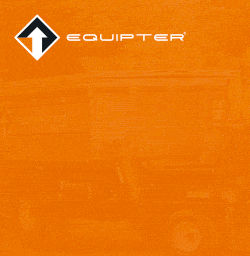







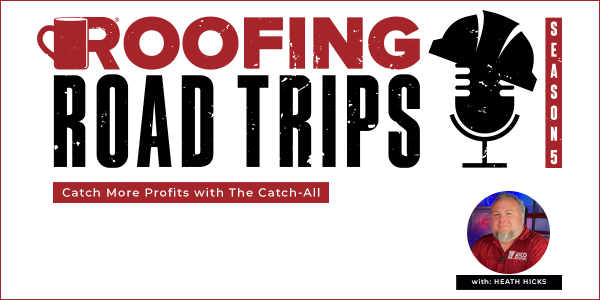
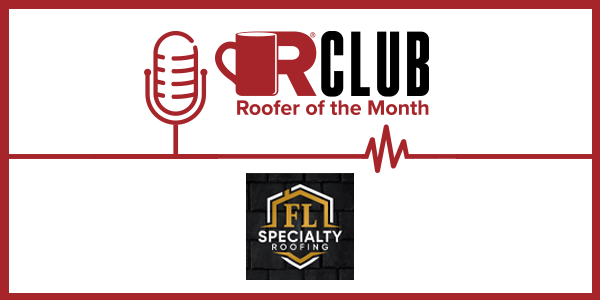
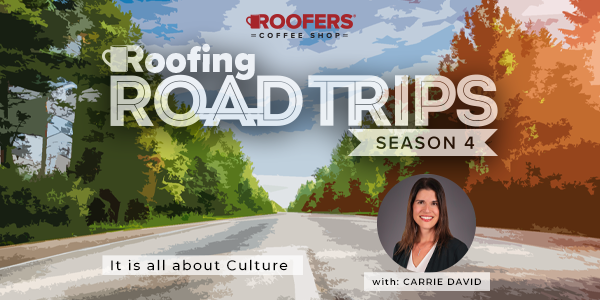




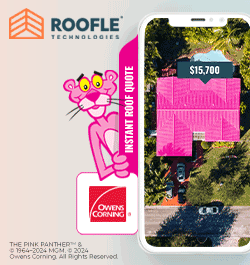

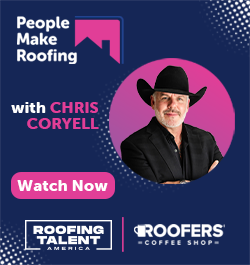

Comments
Leave a Reply
Have an account? Login to leave a comment!
Sign In